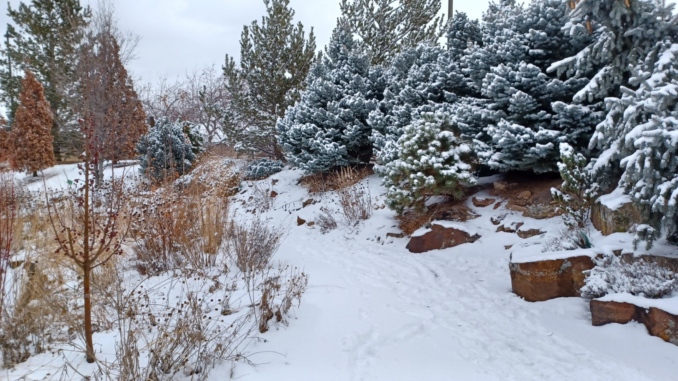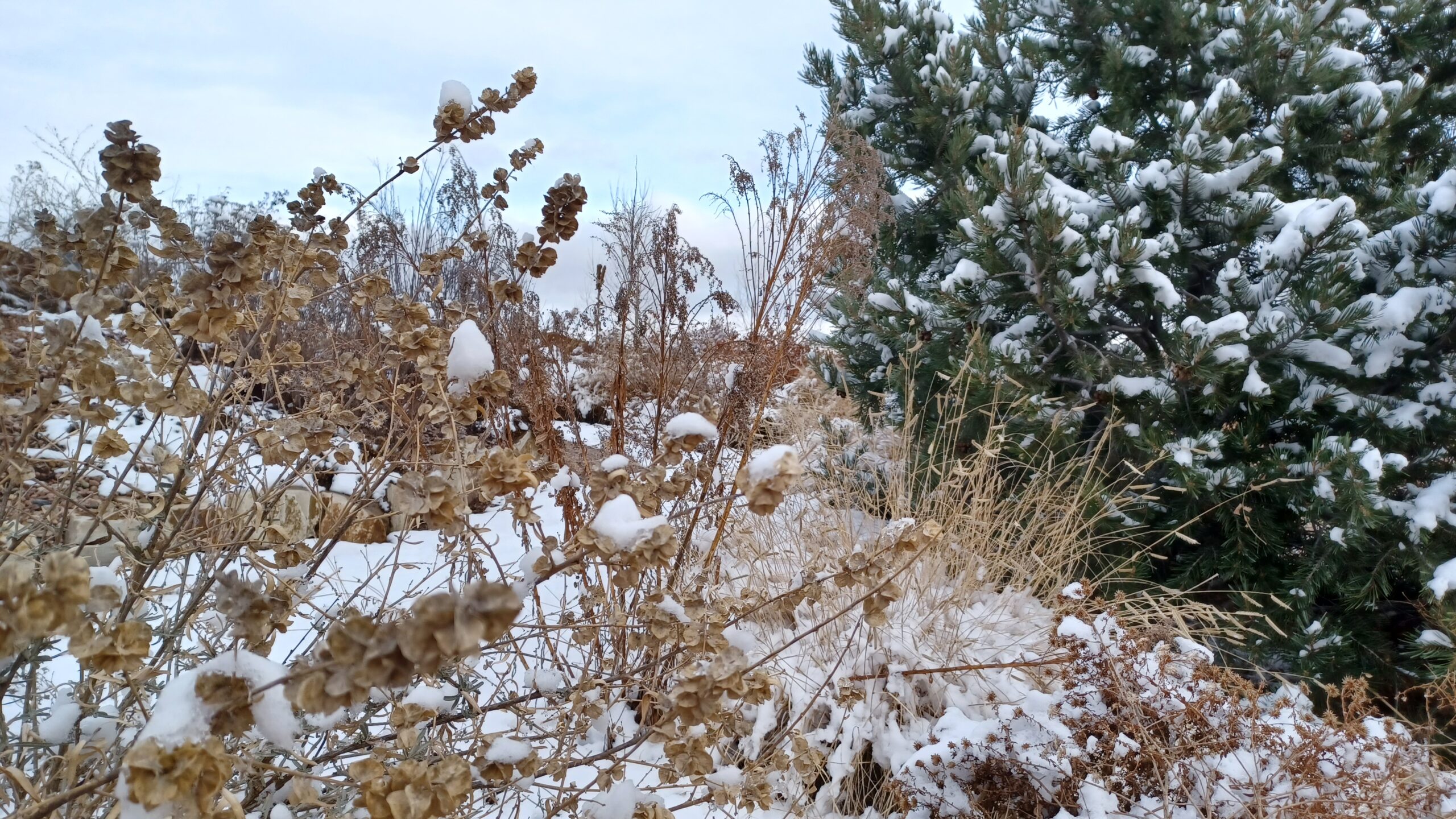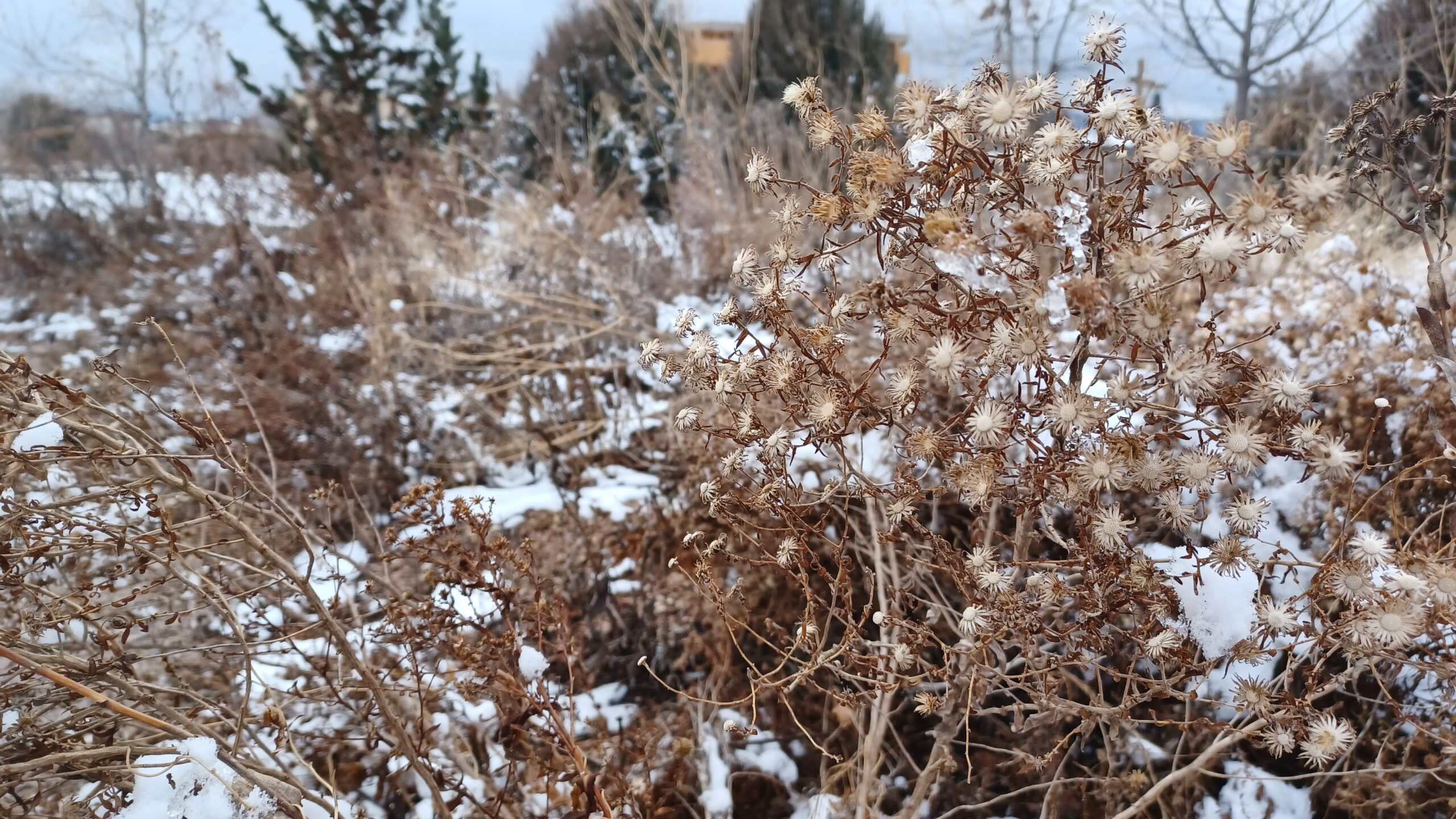

by Andrew Scott | The Gardens on Spring Creek Horticulturist
Many, many studies suggest that just being in nature can reduce stress, lift one’s mood, and generally improve mental health in addition to bulking up your plant knowledge. It’s easy to get out and appreciate plants when it’s warm, but botanizing (the practice of studying plants) can be done any time of year if you’re looking for a bit more of a challenge!
The easiest way to introduce yourself to winter botanizing is to revisit locales that you’re already familiar with, whether it be a hiking trail, natural area, park, or even your backyard. Revisiting sites in wintertime allows you to be familiar with the plants in the area but removes the identifying diagnostics that we tend to lean on in the growing season, namely flowers and leaves. This forces you to look at characteristics you may normally overlook,
like buds, bark, twigs, and even the environment you’re in. Don’t worry, there are several books available for winter plant ID specifically focusing on year-round features to help you along.

Woody plants are a good place to start since their overall form doesn’t change much once they drop their leaves. Leaf buds develop in the fall and continue to mature and enlarge during the winter, making them an excellent diagnostic. Look at leaf and stem arrangement first, keeping the mnemonic “MADCapHorse” in mind: maple, ash, dogwood, the Caprifoliaceae family (including honeysuckles and viburnums), and horse chestnuts. Although most plants have alternating buds, MADCapHorse plants have opposite buds. Beyond opposite or alternate, look closely at bud habit. Are they long or stubby? Sharp or blunt? Smooth, sticky, or hairy? Are they solitary or clustered together? Are they pressed flush with the stem or sticking out from it?
The wood surface itself can also be indicative. Is the bark friendly or armed with spines and thorns like roses and American plums? Does it remain intact throughout, or does it peel like a paper birch or Russian olive, flake off like a sycamore, have lenticels like aspens, or become stout and fissured like eastern cottonwoods? Naked stems can give you a clue about species, too; most plants have straight stems, but some woodies like honeylocust, three-leaf sumac, and eastern redbuds, for example, put out buds that cause their stems to broadly zig-zag from each node.

Structures that persist into winter are particularly helpful. Maples and oaks exhibit “marcescens,” where dead leaves remain on the tree through the winter, so if you see a tree still covered in leaves, chances are good it’s one of the two. Fruiting structures may also hang on into winter: wild carrots may hold onto their umbel flowers, the dried burst-open husks that used to hold milkweed or wild licorice seeds still cling to the plant, the cup of overlapping bracts remain after the aster petals borne from it faded and fell, and so on. Grasses can also be identified by their seedheads (at least to the tribe/genus) but are significantly more difficult since their primary ID structures are dried and too brittle to get a good look at. Beginners may want to reserve grass ID for the summer to get familiar with them first; it takes a special kind of masochist to botanize winter grasses. Who, me? No, never…
When the world sleeps under a blanket of snow, there are still plenty of gratifying opportunities to get out and appreciate nature. Bundle up, go outside, and take a little closer look at what you might have been overlooking all this time!
Support Northern Colorado Journalism
Show your support for North Forty News by helping us produce more content. It's a kind and simple gesture that will help us continue to bring more content to you.
BONUS - Donors get a link in their receipt to sign up for our once-per-week instant text messaging alert. Get your e-copy of North Forty News the moment it is released!
Click to Donate
